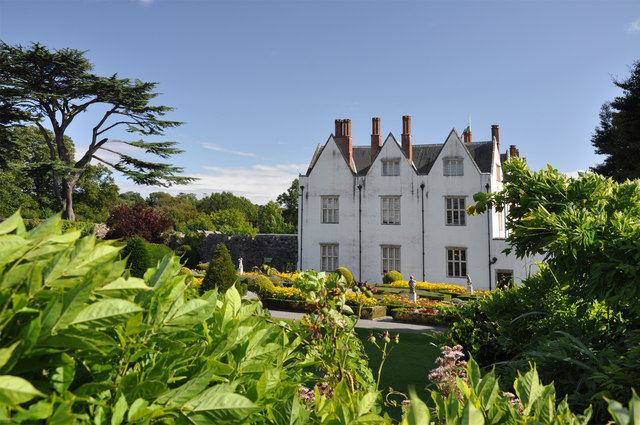Established 1948 Number of visitors 610,155 | Phone +44 300 111 2333 | |
 | ||
Location St Fagans, Cardiff, Wales Website www.museumwales.ac.uk/en/stfagans/ Address St Fagans, Cardiff CF5 6XB, UK Hours Open today · 10AM–5PMFriday10AM–5PMSaturday10AM–5PMSunday10AM–5PMMonday10AM–5PMTuesday10AM–5PMWednesday10AM–5PMThursday10AM–5PMSuggest an edit Similar National Museum Cardiff, Techniquest, Castell Coch, Bute Park, Roath Park Profiles | ||
St fagans natural history museum cardiff
St Fagans National History Museum (Welsh: Sain Ffagan: Amgueddfa Werin Cymru), commonly referred to as St Fagans after the village where it is located, is an open-air museum in Cardiff chronicling the historical lifestyle, culture, and architecture of the Welsh people. The museum is part of the wider network of Amgueddfa Cymru – National Museum Wales.
Contents
- St fagans natural history museum cardiff
- St fagans national history museum croeso cymru visit wales 2015
- History
- Buildings and exhibits
- Future developments
- References
It consists of more than forty re-erected buildings from various locations in Wales, and is set in the grounds of St Fagans Castle, an Elizabethan manor house. In 2011 Which? magazine named the museum the United Kingdom's favourite visitor attraction.
St fagans national history museum croeso cymru visit wales 2015
History
The museum was started in 1946 following the donation of the castle and lands by the Earl of Plymouth. It opened its doors to the public in 1948, under the name of the Welsh Folk Museum. The museum's name in Welsh (also meaning "Welsh Folk Museum") has remained unchanged since that date, whereas the English title was modified once to Museum of Welsh Life, and again to its current nomenclature.
The brainchild of Iorwerth Peate, the museum was modelled on Skansen, the outdoor museum of vernacular Swedish architecture in Stockholm. Most structures re-erected in Skansen were built of wood and are thus easily taken apart and reassembled, but a comparable museum in Wales was going to be more ambitious, as much of the vernacular architecture of Wales is made of masonry.
Buildings and exhibits
The museum includes more than forty buildings which represent the architecture of Wales, including a nonconformist chapel (in this case, Unitarian), a village schoolhouse, a Toll road tollbooth (below), a cockpit (below), a pigsty (below), and a tannery (below).
The museum holds displays of traditional crafts with a working blacksmith forge, a pottery, a weaver, miller, and clog maker. It also includes two working water mills: one flour mill and one wool mill. Part of the site includes a small working farm which concentrates on preserving local Welsh native breeds of livestock. Produce from the museum's bakery and flour mill is available for sale.
The medieval parish church of Saint Teilo, formerly at Llandeilo Tal-y-bont in west Glamorgan (restored to its pre-Reformation state), was opened in October 2007 by the Archbishop of Canterbury, Rowan Williams. A Tudor merchant's house from Haverfordwest, opened in 2012, is the latest building to be added to the museum's collection. Future plans include the relocation of the historic Vulcan public house from Newtown in Cardiff.
Although the museum was intended to preserve aspects of Welsh rural life, it now includes several buildings that depict the industrial working life that succeeded it, that being almost extinct in Wales. There is a row of workers' cottages, depicting furnishing from 1800–1985, from Rhyd-y-car near Merthyr Tydfil (below), as well as the pristine Oakdale Workmen's Institute (below). Even a post-war prefabricated bungalow (below) has been erected on the grounds.
Since 1996 the museum has hosted the Everyman Summer Theatre Festival when it re-located from Dyffryn Gardens. This festival, which includes a Shakespeare play, a Musical, and a Children's Show has become part of Welsh theatrical calendar since its founding at Dyffryn in 1983.
Scenes from the Doctor Who episodes "Human Nature" and "The Family of Blood" were filmed at the museum.
It is planned that The Vulcan Hotel that was originally located in Adam Street, Cardiff, will be rebuilt on the site. It had originally opened in 1853, but closed for the last time in May 2012, but was dismantled in 2013 and is now in storage. It is hoped to restore the pub as it would have looked in 1915.
